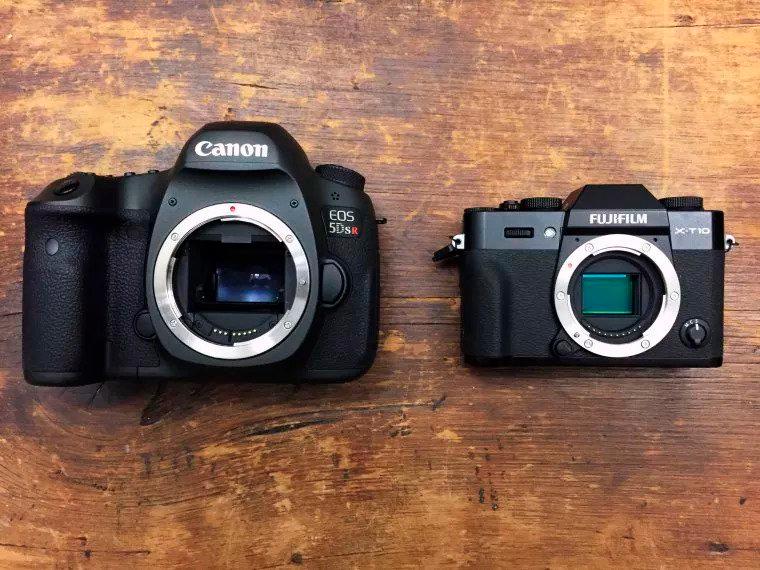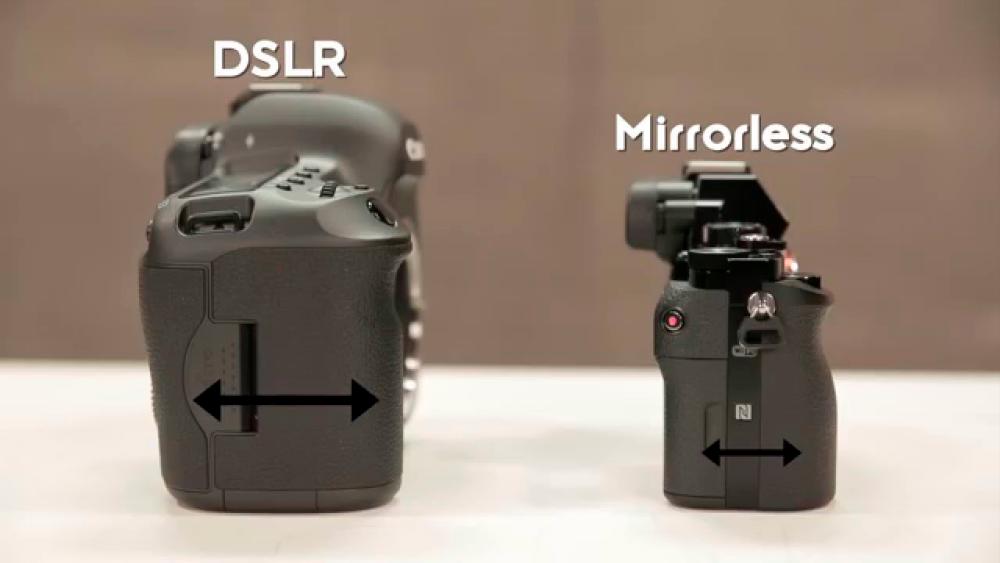IT doesn’t matter whether you’re an avid fan of photography, or just in the market for a new camera – you’ve probably heard of the DSLR vs mirrorless debate that has been raging for several years.
So, how close are we to determining a clear winner? Well, the decision will always be a matter of personal preference, but camera manufacturers have already begun to be more transparent about their intentions.
In the last few years, major camera manufacturers can be seen focusing more on mirrorless camera systems, as both Canon and Nikon have been seen discontinuing, or not updating, their DSLR models.
This means that mirrorless is pretty much the default format for new cameras and is part of the recommendation for most people.
However, this won’t be that simple as DSLRs continue to offer outstanding value, and extensive, renowned lens lineups. DSLR cameras, as you may have noticed, are still in high demand on the market today. People still sell and buy them even if they are used, older model devices. So, let’s look at the distinctions and where each camera type excels.

What’s the main difference?
There are many similarities and differences between these two cameras. One of the similarities is they both have interchangeable lenses, making them more versatile than fixed-lens point-and-shoot, and instant cameras. For amateur photographers who are eager to learn and progress, either of these makes a fantastic starting point.
DSLRs and mirrorless cameras both display the scene through the camera lens while you take a photo, but they do so in vastly different ways. DSLRs reflect an optical picture into the viewfinder using a mirror that is inside the camera body.
The mirror reflects light from the lens up to a prism (or multiple mirrors) and into the viewfinder, allowing you to preview your shot before you capture it. When you click the shutter button, the mirror flips up to allow the image to pass through to the rear of the camera, the shutter opens, and light strikes the image sensor, capturing the final image.

Mirrorless cameras, on the other hand, apply a different approach. They use the camera sensor’s “live view” to make an electronic image that can be shown on the rear screen or in an electronic viewfinder – just as a smartphone camera does. There is no mechanism for flipping the mirror up and out of the way.
But what seems like a win-win situation is actually quite complicated. Many people prefer the optical image of a DSLR viewfinder because it provides a “naked eye” view of the world without screen lag or digital artifacts. Second, digital displays require significantly more power, and mirrorless cameras cannot yet match the battery life of DSLRs.
Image quality
Both types of cameras may produce high-quality images with similar resolutions and noise levels. Mirrorless cameras used to have smaller image sensors, which meant lower quality, but that is no longer the case as these camera manufacturers have learned how to make more sensitive chips and reduce noise from small sensors.
In addition, several mirrorless camera manufacturers have now increasingly utilised bigger-picture sensors.
There are also a handful of full-frame mirrorless cameras with the same sensor size (35mm) as premium DSLR cameras.
Sony, Canon, Nikon, as well as Fujifilm, have already produced mirrorless cameras with larger-than-full-frame Medium Format sensors.
Both camera types can take high-quality images because they have similar sensors and processors.

Size
The most commonly mentioned advantage of mirrorless systems is their lower size compared to DSLRs. This is the primary selling point of mirrorless systems: DSLR-like sensor size and image quality without the heft.
Nonetheless, there are often trade-offs involved in making a mirrorless camera body so compact, including battery life, how a camera handles larger lenses, and the number of additional dials and buttons.
A mirrorless camera is easier to transport, and a camera bag can hold more accessories like extra lenses and batteries.
Video quality
Mirrorless cameras have a significant benefit in this section. Firstly, their shape makes them far better suited to the continuous ‘live view’ required for video capturing.
Secondly, camera manufacturers are concentrating their video capture technologies on this type of camera, so the best video features and performance is in the progress for sure.
But don’t forget that DSLRs can also have tremendous video shots. The Nikon D90 introduced HD video to the consumer market, while the Canon EOS 5D II introduced DSLRs into professional videography and filmmaking.
Nonetheless, whatever innovations bring to the future, it will all be for the best.
For the time being, we believe mirrorless will be the next line up, however, used DSLRs will continue to offer excellent value.









